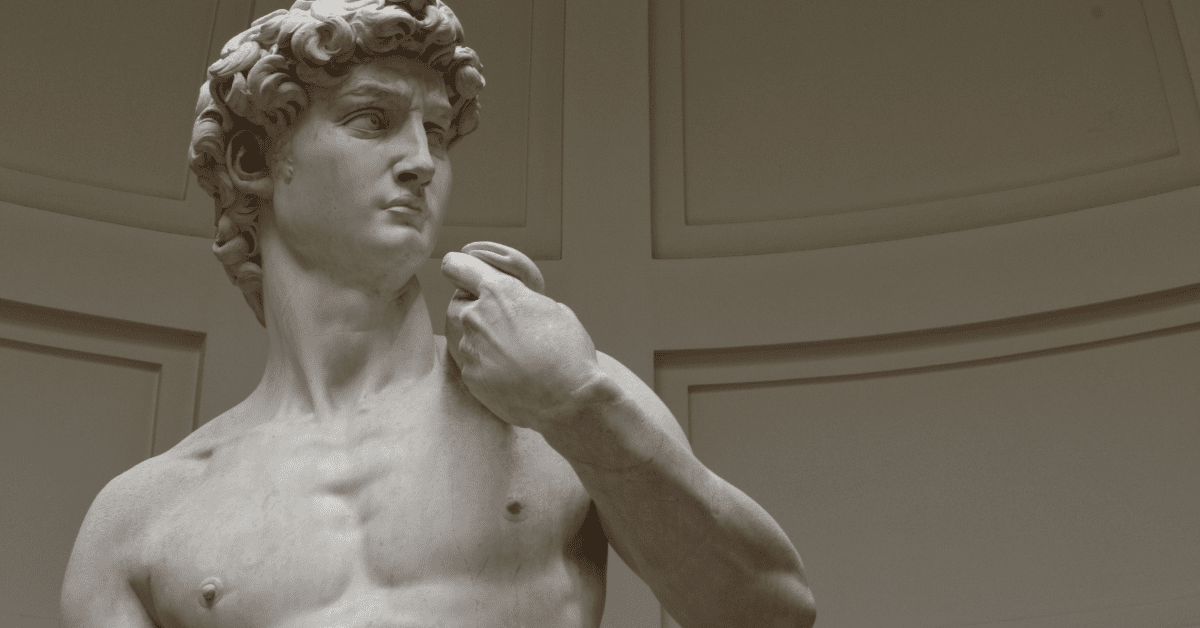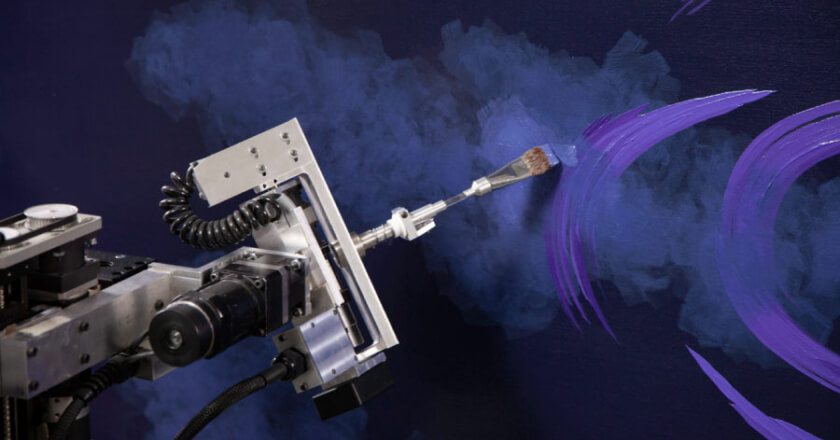Get Inspired
Build the life you love. Learn more about fusioneering:

Posted on January 23, 2024 in Inspirational People
He is lauded as the most accomplished artist of his era. His works encompass not just paintings or sculptures, but whole buildings and imagistic representations of an entire religious doctrine. In his understanding of how to recreate human anatomy, he is unparalleled.
The brilliant creator’s artistic process was characterized by an unparalleled dedication to mastering various disciplines and an innovative approach that transcended conventional boundaries. His multidisciplinary approach encompassed sculpture, painting, architecture, and even poetry, showcasing his versatility and visionary thinking.
Today, we talk about one of the most legendary and influential artists to have ever lived: Renaissance artist Michelangelo.
Related: Artistic Innovator Georges Méliès, the Father of Modern Cinema
Michelangelo di Lodovico Buonarroti Simoni — simply known as Michelangelo — was born on March 6, 1475 into a modest family in Caprese, Italy. At a young age, Michelangelo displayed an innate inclination toward art and creativity. His father, Ludovico di Leonardo Buonarroti Simoni, a minor official in Florence, recognized his son’s talent and encouraged the boy’s artistic pursuits. However, the father’s support was met with resistance from Michelangelo’s grandfather, who disapproved of art as a suitable profession for the family.
Influenced by the vibrant artistic environment of Florence during the Renaissance, Michelangelo was inspired by the works of renowned artists such as Leonardo da Vinci and Sandro Botticelli. He became particularly fascinated by classical sculptures and spent time studying ancient Roman and Greek art, drawing inspiration from the idealized forms and lifelike qualities of these sculptures.
Related: How Well Do You Know History’s 5 Most Influential Paintings?
At the age of 13, Michelangelo began his apprenticeship with Domenico Ghirlandaio, a prominent painter of the time. Under Ghirlandaio’s tutelage, Michelangelo honed his skills in painting and absorbed the artistic techniques prevalent in Florence.
His artistic education expanded when he entered the household of Lorenzo de’ Medici, the influential ruler of Florence and a patron of the arts. In the Medici household, Michelangelo had access to a vast collection of classical art, literature, and intellectual discussions. Surrounded by poets, philosophers, and scholars, Michelangelo’s mind was enriched with diverse knowledge and cultural influences that would shape his artistic vision.
During this formative period, Michelangelo’s exposure to humanist philosophy and the revival of classical ideals greatly influenced his artistic style. He developed a deep appreciation for the human form, anatomy, and the portrayal of emotion, which would become hallmarks of his later works.
Related: Watch a Robot Paint with the Skill of a Renaissance Master
Michelangelo’s sculptural process was meticulous and deeply rooted in the study of anatomy. He believed in the importance of understanding the human body to create lifelike and emotionally resonant sculptures. The man’s devotion to anatomical accuracy and his ability to infuse marble with life-like qualities set his sculptures apart — and still does today. His statue of David is universally considered one of the most life-like human representations ever sculpted.
Michelangelo’s sculpting technique involved a rigorous process of sketching, studying anatomical models, and carving directly into the marble without using intermediary models. This direct method allowed him to bring out the potential he saw within the stone. He’s quoted as saying:
“The sculpture is already complete within the marble block before I start my work. It is already there, I just have to chisel away the superfluous material.”
In painting, Michelangelo’s magnum opus remains the frescoes adorning the ceiling of the Sistine Chapel in the Vatican. His approach to painting was as meticulous as his sculpting method. He and his assistants spent four years (1508–1512) suspended on scaffolding, carefully painting a complex variety of scenes from Genesis. The staggering completed work contains over 300 figures and covers more than 500 square meters.
“Fresco,” from the Italian word for “fresh,” is a style of painting that’s been known for thousands of years. It involves the application of pigments to plaster structures.
Michelangelo and his contemporaries devised a better means of fresco painting, known as “buon fresco” (true fresh) that allowed paintings to truly merge with the environment they were applied to. The innovative new fresco technique involved applying alkaline-resistant pigments directly onto wet plaster, enabling the colors to bond with the surface. Michelangelo’s mastery of this challenging medium allowed him to create vibrant and enduring frescoes, demonstrating his skill in not only making incredible paintings, but also in making them stand against the test of time.
Related: Learn How to Texture Your Own Paintings
The Vatican had a habit of passing difficult (or supposedly impossible) tasks onto Michelangelo. As the stories go, a jealous fellow artist talked the pope into commissioning Michelangelo for the Sistine Chapel ceiling in the hope that he would fail the extraordinary work order.
Michelangelo rose to the challenges he was given, and actively sought-out greater and more complex tasks to accomplish. After numerous architects failed to complete the dome of St. Peter’s Basilica, Michelangelo was assigned to finish the work. He inherited 40 years’ worth of plans and concepts from the previous architects, and had to make sense of the most enormous construction project of his age.
While the dome was completed after Michelangelo’s death, it was his ability to distill the artistic ideas and structural designs of the other contributing architects into a single, cohesive, and legible plan that allowed the project to come to fruition. Today, many art historians consider Michelangelo to be the greatest architect and artist of the Renaissance period.
Read More: See How the Fibonacci Sequence Informed Classical Art
Michelangelo’s impact on the art world reverberates through the centuries. His artistic innovations, scale, mastery of form, and ability to infuse emotion into his creations continue to inspire artists and admirers worldwide.
What set Michelangelo apart was his ability to seamlessly navigate multiple artistic disciplines, blurring the lines between them. His deep understanding of anatomy from sculpting informed his paintings, allowing for a mastery of human form and emotion. His architectural designs often featured sculptural elements, showcasing a holistic approach to artistic creation.
Michelangelo’s multidisciplinary approach was underpinned by a relentless pursuit of perfection and an insatiable thirst for knowledge. His ability to seamlessly blend disciplines and infuse each art form with elements from the others remains a testament to his visionary mind and extraordinary creativity. His multidisciplinary genius continues to inspire artists and innovators across various fields to this day.
Seeking more art & innovation? You’ve come to the right place. Get the most out of The Kirby Foundation by following our Instagram, Facebook, Pinterest, and newsletter, and find what inspires you!
Are you interested in hearing the complete story of Paul and Dulcinea? Watch the video (nominated for Best Short Film at the 2021 Vail and Portland Film Festivals) for more info.
Want to be the first to know about every exciting new project at the Kirby Foundation?
Join Our Mailing ListBuild the life you love. Learn more about fusioneering:
Why pick which passion you should follow? Fusioneering allows you to cultivate many interests into something innovative and revolutionary.

Meet Paul and explore how blending your interests can empower you to follow your enthusiasm and bring your passions to life.